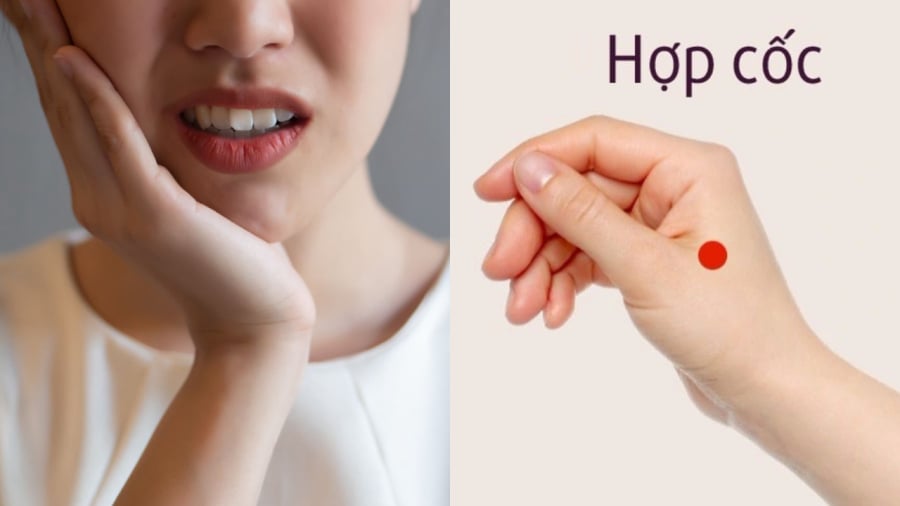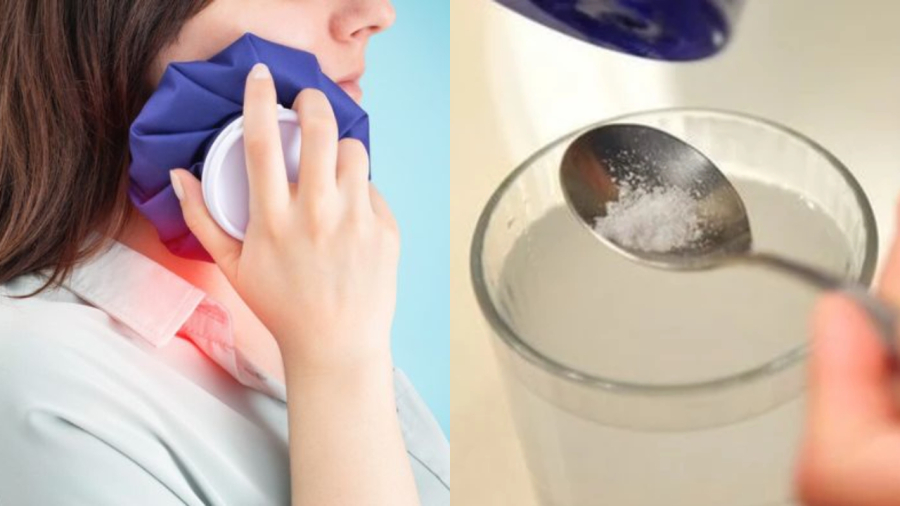Causes of Toothache
A nagging or throbbing toothache in and around the jaw can disrupt your appetite and sleep. There are several different causes that contribute to this toothache condition. It could be tooth decay, pulpitis, gum inflammation, gingivitis, wisdom tooth eruption, injury, cracked tooth, broken tooth…
To address these toothaches thoroughly, you should consult a specialist to identify the exact cause and find the appropriate treatment. However, if you cannot see a dentist immediately, you can apply the following remedies to temporarily relieve the pain.
Home Remedies for Toothache
– Acupressure
Acupressure is a simple way to alleviate toothaches. You can press on the cupping, jaw hinge, and jaw lowering points.
The cupping point (also known as the tiger mouth acupoint) is the triangular depression between the index finger and thumb. Press on this acupoint for about 2 seconds, then release for 1 second. Repeat this action for 1-3 minutes with sufficient force. Perform the same with the other hand. According to traditional Chinese medicine, the cupping point is related to the face and belongs to the large intestine yangming meridian, so pressing on this position can help relieve toothache (the large intestine meridian passes through the mouth, throat, and gum area).

Pressing on the cupping point can help alleviate toothache.
The hinge acupoint is located between the cheekbone of the cheekbone area, from the ears down to the lower jaw, and is the recessed area when clenching. Once you have identified this acupoint, use your middle finger to hold it for 1-3 minutes. In the theory of meridians, the hinge point is the acupoint that treats painful areas of the face and chin. Therefore, pressing on this acupoint can help reduce toothache.
In addition to the two aforementioned acupoints, pressing on the jaw lowering point can also help alleviate toothache. This acupoint is located in the depression in front of the ear, beneath the cheekbone, when closing the mouth. Press and hold this acupoint for 1-3 minutes.
When performing acupressure, use relatively strong force and repeat once every 4-6 hours.
Cold compress is an easy way to relieve toothache, suitable for cases of pain due to injury, swollen gums, and wisdom tooth eruption. Put some ice in a fabric bag or cotton towel, then apply it to the outer part of the painful area. Apply cold compress for about 20 minutes, repeating once every 4-6 hours. The low temperature will reduce blood flow to the painful area, thereby reducing inflammation and relieving pain. Note: Do not apply ice directly to the skin as extremely low temperature can cause frostbite.

Cold compress and saltwater mouth rinse are simple ways to relieve toothache.
Saltwater has antiseptic properties and helps remove food debris in the oral cavity and between teeth, thereby preventing oral diseases and reducing toothache. You can buy physiological saline solution with a concentration of 0.9% available at pharmacies for mouth rinsing or prepare this solution by diluting 9 grams of salt in 1 liter of boiling water, then letting it cool. Use saltwater to gargle and rinse your mouth for 30 seconds, then spit it out. Note: Do not use too weak or too salty saltwater as both types are ineffective in reducing toothache. A 0.9% saline solution is the most suitable option.
– Hydrogen Peroxide Rinse
Hydrogen peroxide has effective antibacterial properties. Rinsing your mouth with hydrogen peroxide is suitable for toothache caused by infection.
Note: Do not use pure hydrogen peroxide for mouth rinsing. With 3% hydrogen peroxide, you need to dilute it with clean water at a 1:1 ratio and rinse your mouth for 30 seconds. Spit out the solution and rinse your mouth several times with clean water. Absolutely do not swallow hydrogen peroxide. Consider carefully before applying this method with young children.
– Use Herbal Remedies
Herbs have bactericidal and anti-inflammatory properties to a certain extent, which can help soothe toothaches.
You can use crushed garlic mixed with a little salt and water and then apply it to the painful area. Allicin in garlic has strong antibacterial properties, helping to kill bacteria, reduce inflammation, and relieve toothache.
In addition to garlic, you can use cloves to alleviate toothache. Cloves contain eugenol, which has a natural anesthetic effect. Moreover, this herb also has anti-inflammatory, antibacterial, and antiseptic properties. Place a few drops of clove essential oil on a cotton ball and apply it directly to the painful tooth area. Alternatively, if you have dried cloves, you can put them in your mouth and chew, keeping them in the area of the painful tooth for about 30 minutes to gradually reduce the pain.
Peppermint is also an herb with numbing, antibacterial, and anti-inflammatory properties, which helps soothe toothache. You can prepare peppermint water by soaking dried peppermint leaves in water for about 10 minutes. Use peppermint water as tea or use it for mouth rinsing, both of which have the effect of reducing toothache. If you have peppermint essential oil, you can dilute a few drops of it with water and use this solution for mouth rinsing.
– Use Painkillers
In cases of toothache without immediate dental visits, you can use pain relievers to alleviate the pain. Ibuprofen (Advil) and acetaminophen (Tylenol) are commonly used pain relievers that have a quick effect in reducing toothache. Note: When using pain relievers, be sure to read the instructions before use.
































